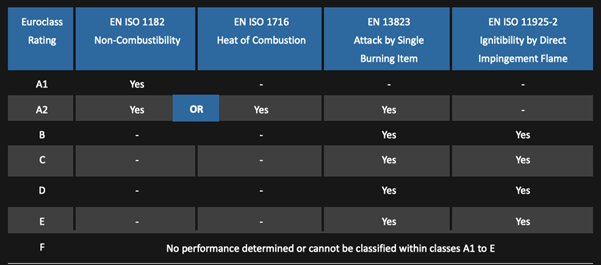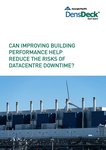With recent high-profile fires, most notably the Grenfell Tower fire of 2017, there has been a renewed focus on the fire safety of buildings across all areas of construction.
Changes to the UK Building Regulations in October 2018 and June 2022 effectively banned, with some exceptions, the use of materials classified as combustible in buildings over 11 metres.
For other areas of the building envelope, clients and specifiers are looking for ways to support the 'non-combustible' design of building elements.
This is especially true for data centers and buildings in mission critical environments, where fires can cause vast disruption to businesses that need to operate around the clock, 365 days a year.
Can designers of mission critical buildings focus on ways to reduce fire risks and maximize building performance rather than just meeting the minimum requirements of the UK Building Regulations?
In this article we will focus only on passive fire resistance measures through the design and specification of suitable construction materials. We will not cover active fire strategies, such as sprinkler systems.
UK and European fire standards and flat roof fire performance
Several tests can be used to classify the reaction to fire properties of the individual materials used in flat roofs and the combination of materials that make up a flat roof specification. It is crucial to consider how the reaction to fire of materials is measured, as this determines whether they can be classed as 'combustible' or 'non-combustible'.
There are several tests that can be used to classify the reaction to fire of a construction product. They are listed in the table below:
To look at how a section of the roof behaves when subjected to fire from the outside of the roof, for example, by a burning ember from a nearby building fire, in the UK, we turn to the BS476: Part 3 test. Test specimens must be representative of the complete "end use" roof construction, including at least one specimen of any joints used in each of the materials to be tested.
The BS476: Part 3 test has long been used in the UK and is not one that would be familiar for projects within Europe where another test TS 1187 is used.
FM approvals and fire resilience of roof build-ups
It is not always possible to use exclusively non-combustible materials in flat roofs for commercial buildings.
A closer look at the roof market to explore how flat roof designs are tested in the UK and Europe and how the FM approvals approach to evaluating fire resistance can raise confidence levels that a specific roof assembly will perform as designed.
FM approved roof assemblies are tested for their resilience against a wide range of potential issues that can affect the performance of the roof and potentially cause disruption to the building it protects.
Specifying to minimize fire risk and maximize building performance
In mission critical buildings, compliance with UK Building Regulations may not be sufficient to adequately protect the building from the disruption to business caused by an external or internal fire outbreak.
In an external fire situation, adding roof cover boards to the roof assembly can enhance fire resistance and also bring a host of other benefits that will help maximize building performance.
What are roof cover boards, and how can they limit fire spread?
Roof cover boards are protective boards used in flat and low slope roofs. They are fixed above the insulation and below the waterproofing layer, where they can bring several benefits to the roof assembly. Roof cover boards are compatible with various waterproofing layers and can be used above all insulation types.
Where cover boards with a non-combustible classification are used, they can provide an additional layer of fire resistance should a fire start on the outside of the roof. The rate of fire spread may be slowed, so the damage to the roof is reduced until the fire can be extinguished.
Internal fire spread and roof boards
The same ability to slow fire spread would apply if the fire were coming from inside the building. However, in this scenario, it would have to get past the layers below, such as the insulation, so that the fire would be well-developed, and the board's contribution would be less significant to the overall roof protection.
It is worth noting that where protection from internal fire spread is required, a non-combustible-classified board can also be secured over the structural deck and beneath the insulation. This is to help protect the insulation from fire should internal fire become an issue.
It is simply called a 'roof board' or 'roof substrate board'. This will help to shield any non-combustible materials within the roof assembly from the heat and will help to minimise the potential for the fire to spread internally, including over a compartment wall.
You can watch the entire course on demand video here.
More from Georgia Pacific
-

Sponsored Take cover: Roof and cover boards for data centers
The advantages of roof and cover boards for data centers
-

Sponsored Performance and protection starts at the top
Protect your data center, enhance performance, and reduce costs from the top down
-

Sponsored Minimize the risk of water ingress in your data center
Water ingress is the #1 cause of data center downtime, which makes it imperative to pay attention to the roof, argues Georgia-Pacific’s Chris George



